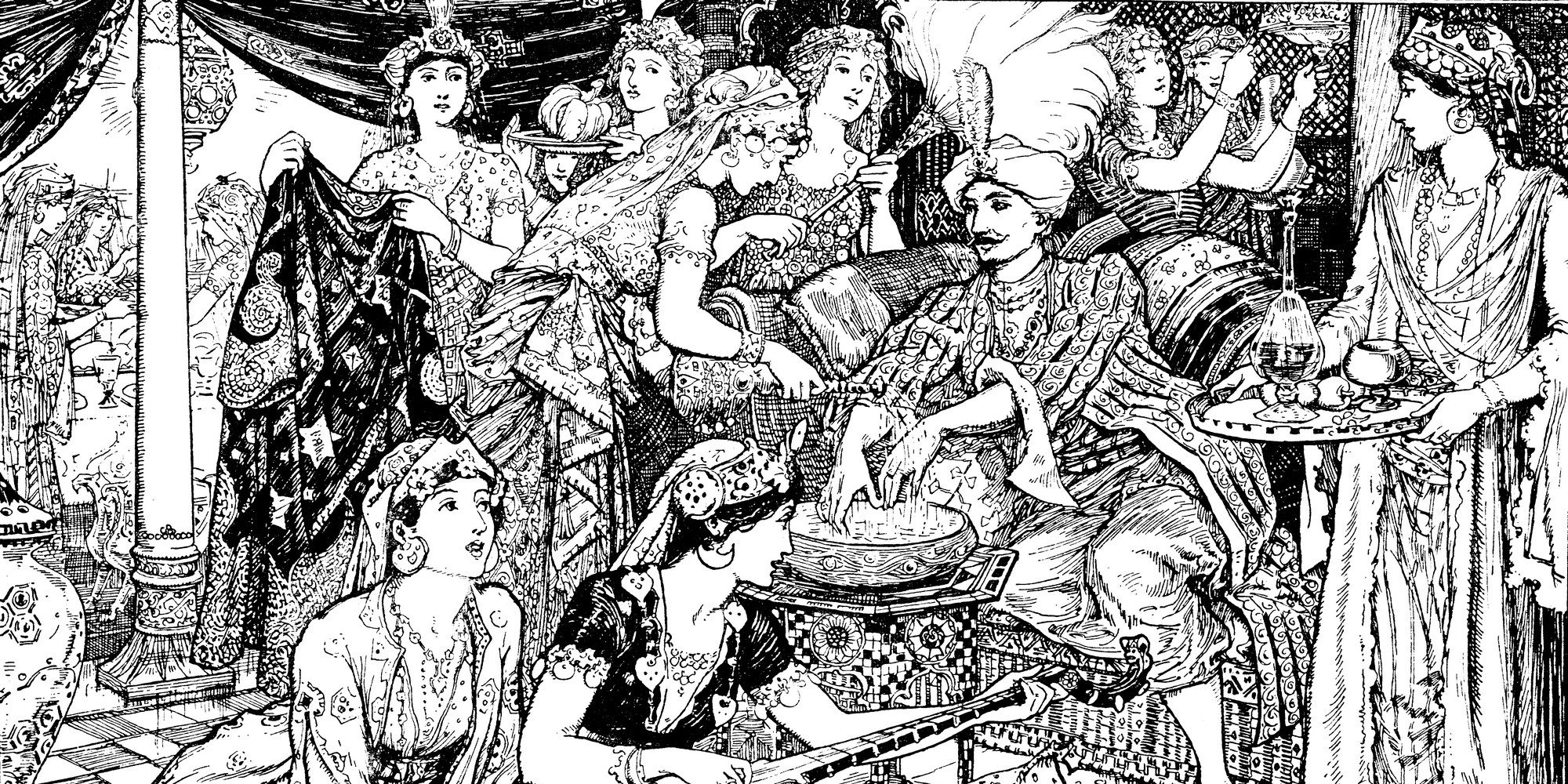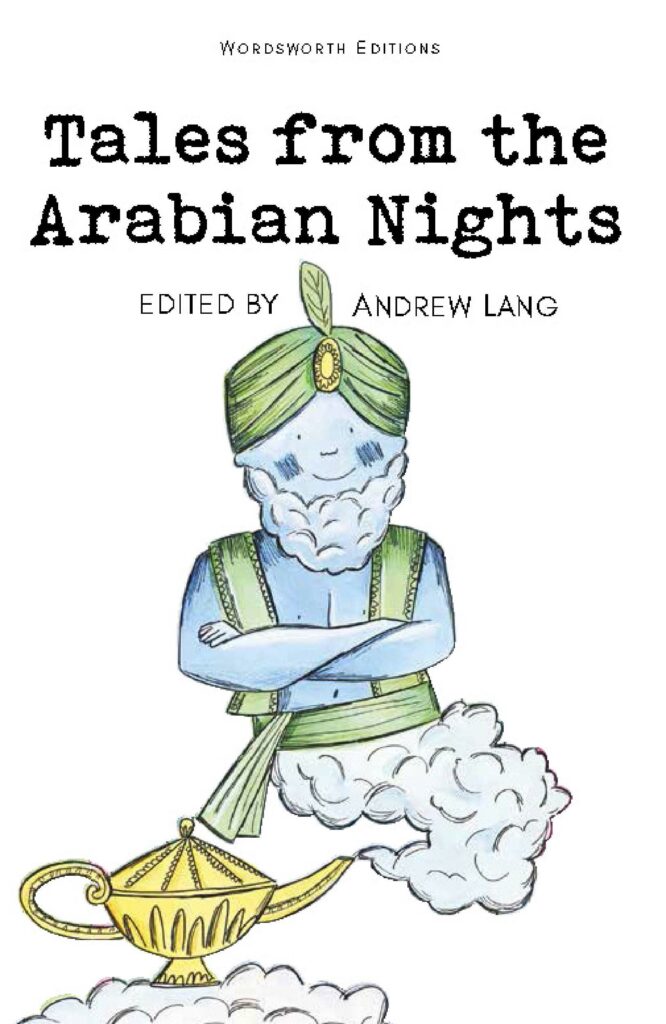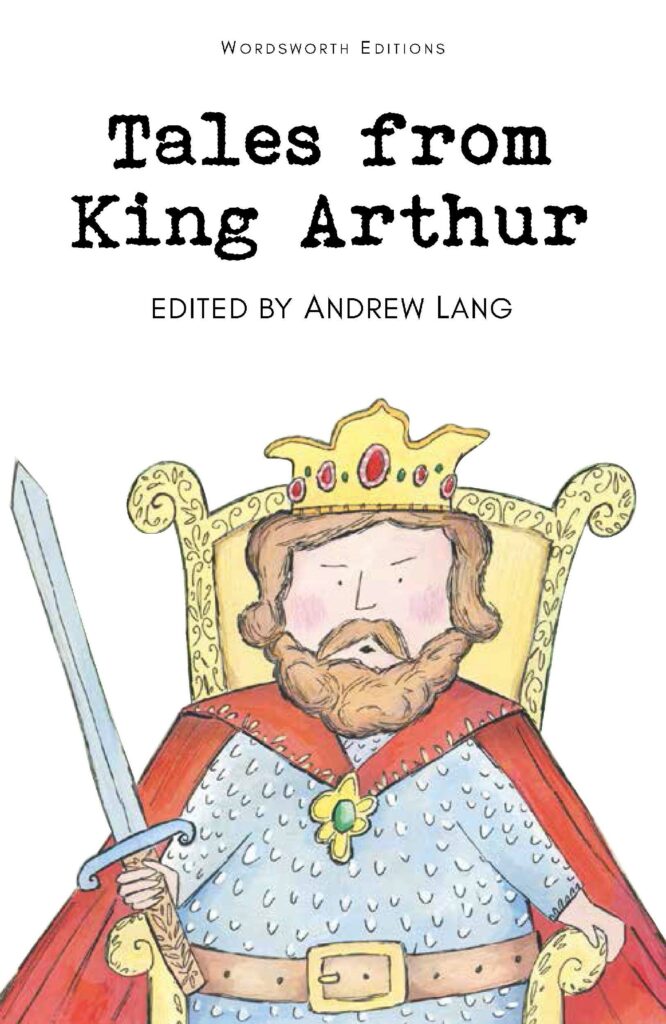
Andrew Lang and his magical tales
David Stuart Davies looks at three collections by a master storyteller.
Here are three books which have the power to transport you well away from a world in turmoil to the realm of fairy tales, legendary adventures and charming folklore. I refer to the Tales of Troy and Greece, Tales of King Arthur, and Tales from the Arabian Nights. The three volumes were translated and edited by Andrew Lang, who presents these stories in such a clear and entertaining fashion that although they are regarded as children’s books, they also engage the imagination of grownups. However, before we get to the stories and the books themselves, first let me first tell you a little bit about this remarkable Scotsman, Andrew Lang.
A poet, novelist and renowned collector of fairy tales and folk tales, Lang was born in 1844 in Selkirk on the Scottish Borders. He was educated at Selkirk grammar school and at the Edinburgh Academy, St Andrews University and Balliol College, Oxford. On completing his education, he soon gained a fine reputation as a journalist, poet, critic and historian and was regarded as one of the ablest and most versatile writers of the period. Today perhaps he is best known for his ‘coloured fairy books’; he wrote a dozen volumes of fairy stories, most of them collected by him over the years, and each volume had a different coloured cover, hence the title of the series. What is so engaging about Lang’s style is the clarity and simplicity of his narratives, which have a freshness and ease that helps the stories come alive. Sometimes he was criticised for having his name on the cover of these books when most of the material inside had been collated from other sources, but it is really his interpretation of the original texts and representation of them which gives them their enduring quality.
Andrew Lang died on 20 July 1912 in Aberdeen. He was buried in the cathedral precincts where a monument bearing his name can be visited in the South-East corner of the 19th-century section.
Tales of Troy and Greece
‘Then Achilles rose again, and cried, ‘What coward has smitten me with a secret arrow from afar?’
The bulk of this volume gives us the mythical adventures of Ulysses, the legendary Greek hero who was king of Ithaca, a small island in the Ionian Sea. Lang recounts the Homeric tales of this fabulous courageous character and tells us that Ulysess ‘is good at everything a man can do; he could plough and build houses, and make ships, and was the best archer in Greece.’ His life of adventure – from his battle with a boar when just a youth, to his wooing of Helen of Troy, his battle with the Trojans, which involved the clever use of a large wooden horse, and his fight with the six-headed sea monster Scylla (gruesomely illustrated). These wild and wonderful episodes are filled with such illustrious characters as Achilles, Hector, Agamemnon, Perseus and Oenone, the seductive nymph of the mountains. Even Neptune and the Cyclops have guest appearances in these colourful narratives. Also included in this volume are the adventures of Theseus and his dramatic battle with the Minotaur, and the quest of Jason for the Golden Fleece. Tales of Troy and Greece emerges not only as an engaging storybook but as a simplified history of this mythological world. We read and indeed we learn, aided by Lang’s simple and unfussy style, which gives clarity to these intricate stories.
Tales of the Arabian Nights
‘Sire, there was once upon a time a merchant who possessed great wealth…’
This colourful volume is filled with names everyone knows even if they don’t know their literary origin. I am talking about such characters as Aladdin, Sinbad the Sailor and the great Caliph of Baghdad. This treasure trove of short stories has provided the material for films, plays, musicals and indeed pantomimes. These then are the stories conjured by the beautiful Scheherazade to entertain her husband.
It happens like this: The wives of Sultan Shariar only last for one night because he does not trust them not to cheat on him and so he cuts off their heads the following morning. However, his new wife, Scheherazade, has an idea. If she can gain the sultan’s interest in a new story just before dawn each day, he will not cut off her head because he desires to hear the conclusion of the tale. So, the ingenious girl creates a wide range of fabulous yarns to keep her husband entertained and so is able to preserve her life. In the stories we hear of Aladdin and his wonderful lamp, the Enchanted Horse, the Seven Voyages of Sinbad, Ali Baba and the Forty Thieves and many other legendary characters. This really is a treasure chest of magical fiction, beautifully illustrated by H. J. Ford.
Tales from King Arthur
‘Arthur had many a battle to fight and many kings to conquer before he was acknowledged lord of them all…’
So now we are off to Camelot to enter the romantic world of the Knights of the Round Table and their legendary leader King Arthur. Lang’s fascinating selection of tales from the life of this mythical monarch, drawn from ancient Celtic writings, relates the most potent of the Arthurian legends, in which we learn about Arthur’s birth, the fate foretold him by the wizard Merlin, the sword in the stone, the quest for the Holy Grail, the lady in the lake and the devastating final battle. We are also told of the tragic love of King Arthur and Sir Lancelot for Guinevere. This is powerful and dramatic storytelling, wonderfully enhanced by ancient wood-cut illustrations. The legends of King Arthur are amongst the richest and most mysterious in British folklore and have as much appeal today as they have had through the ages.
This trio of volumes remain fresh and entertaining, extolling the power of myth and legend because, as intimated earlier, Andrew Lang’s skill of creating atmosphere, suspense and pace work so well because of the clean simplicity of his prose.
Books associated with this article

Tales from the Arabian Nights
Andrew Lang
